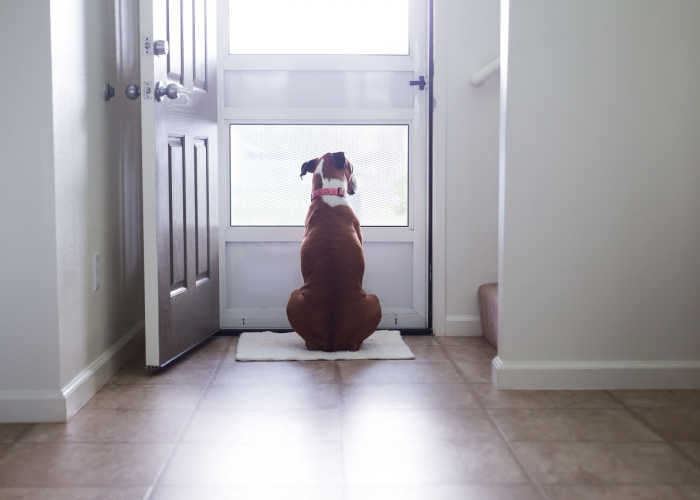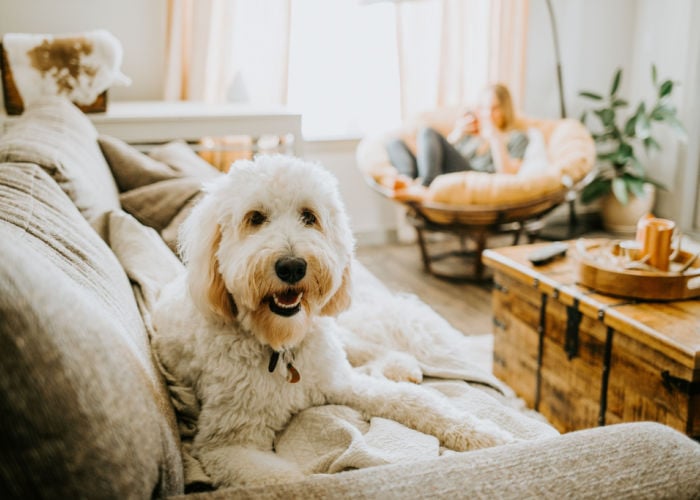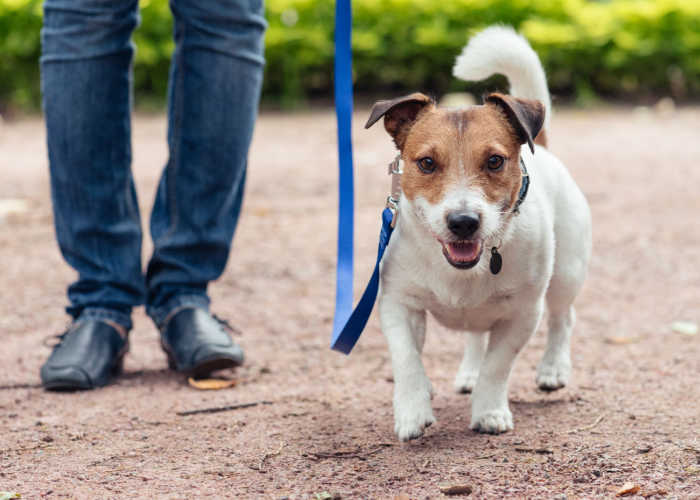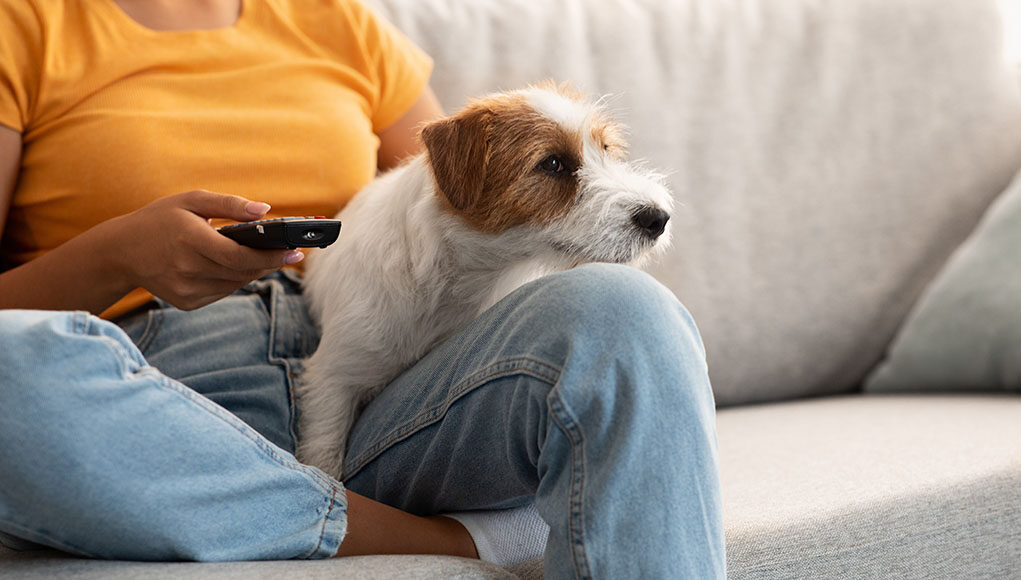Table of Contents
Are you planning on a new journey to become a pet sitter? Well, we got your back with the best dog-sitting tips!
This blog can be your ultimate beginner's guide to becoming the best pet sitter in your area.
Pet sitting for the first time can be stressful and worrisome if you're unprepared.
Remember that dog sitting is not just spending time with someone else's dogs. This task requires more of you than you think.
Dog sitting is in high demand all over the U.S., especially since many people have returned to work since the pandemic.
And even though spending time with a dog while earning some money might be a dream job, their tasks should not be taken lightly.
Pet sitting is a demanding job since it requires plenty of skills. For instance, pet sitting is not just about monitoring the pets.
You're also responsible for feeding, grooming, exercise, and training.

Dog Sitting Tips: Essential Guide for First-Time Pet Sitters
Pet sitters should also be aware of different kinds of circumstances that may occur. For example, what will you do if the dog gets anxious without their parents?
What if the puppy hasn't been potty trained? These are just a few possibilities that can happen.
Without further ado, here are the best beginner tips for pet sitters.
Knowledge is Power
First on our list of dog-sitting tips is to be knowledgeable. Having a love for animals is not enough to become a pet sitter. You also need to be knowledgeable.
For instance, various dog breeds have different exercise requirements per day. Sporting and herding breeds need the most exercise. It also will depend on the dog's age.
Because even though puppies have more energy than adult dogs, they require shorter periods of exercise to avoid exhaustion and possible joint problems in the future.
It's also a great bonus for you to enroll in CPR courses as they teach you essential techniques useful for emergencies.
They also differ in diets. Their diet can vary on whether the dog you'll be sitting has any allergies or health conditions.
Knowledgeable pet sitters should know what foods are poisonous or toxic for dogs.
Foods Dogs Should Never Eat
There are a lot of human foods that dogs are not allowed to eat.
If you plan to give them homemade dog food, it's best to thoroughly check for your chosen ingredients because some of these can be fatal.
Below are a few examples of foods that a dog should never eat:
- Chocolate
- Caffeine
- Xylitol
- Avocado
- Alcohol
- Onions
- Garlic
- Grapes and Raisins
- Milk and other dairy products
- Macadamia nuts
- Yeast dough
Know your Responsibilities
Pet sitting is not just about monitoring the owner's pets. They are also entrusting you with their house and properties.
But this will depend on your agreements. Some pet owners can drop off their pets at your place, but the most common is where you'll stay in their house.
If you're responsible for their home, you must be alert and clean after yourself and the dog.
Dispose of the dog's poop properly. If you and Fido are going for a walk, bring something to scoop the poop.
Also, some pet owners will ask you if you can water their plants while they're gone.
Responsible pet sitters must also check the pet's medical history and current health status. Ask their owners if their pet is taking any medication.
You must also have a plan if the pet ever needs veterinary care or must be rushed to the emergency room.
Do a Meet and Greet
Before the actual job, it's crucial that you first take a visit to familiarize yourself with the house and, most importantly, the pet.
Meeting them beforehand will help you understand their schedule. You'll be able to learn when and where they eat, drink, and play.
Sticking to their routine is important. Dogs are animals that thrive on consistency. They benefit from knowing what's next. This can prevent behavioral problems and boost their confidence.
Meeting the pet before the job can also help the dog familiarize and vibe with you. It can go sideways quickly if you don't meet the pet beforehand.
The dog might begin to feel scared and anxious around you. We want them to feel comfortable and safe with you.
Be Patient and Compassionate
Pets know when their owner leaves. Some dogs get nervous and sad when they are not around, especially those suffering from separation anxiety.
Remembering to stay calm, patient, and compassionate when this happens would be best.
As pet sitters, it is your job to get the extra mile to give them the love and attention they deserve.
Don't just be on your phone scrolling through social media or just watching TV shows while you wait for their owners to return.
Instead, get their favorite toys and play with them until they are no longer interested.
After that, you can try activities such as interactive puzzle toys and brain exercises.
Tire them out with these activities. Remember that a tired dog is happy because they have received a healthy amount of physical and mental stimulation.
Communicate with owners
In every relationship, communication is one of the most important aspects. As pet sitters, we want our clients to be happy, stress-free, and satisfied with our work.
That's why it's important to update them about their beloved pets.
As pet owners, if we're on vacation without our pets, we still think of them constantly. An update from the sitter can relieve some stress and worry.
Send them one photo of their dog daily and give them information about their pet. Ask if they want to video call.
Take pictures or videos of them newly groomed, eating, or playing.

Be Trustworthy
Pet sitters need to be reliable. Clients have trusted you by hiring you to care for their pets and home.
Avoid using personal things that were not offered. Keep in mind that you're a guest in their home.
Secure all the doors and gates around the house to prevent the pet from escaping or wandering off.
Being a trustworthy pet sitter can also affect your reputation. Clients can recommend you to other pet owners, and you can start to grow your brand from there.
More clients mean more money for you!
Be Realistic
Last on our dog sitting tips list is to be realistic. Always be honest with yourself. Don't just accept every offer that comes your way.
You know yourself best. You should know your strengths and weaknesses to determine what you can best offer.
Remember that turning down a job is okay, especially if you and the pet are not vibing well.
It would be best if you also considered your health. As discussed above, some dogs require vigorous training and exercise daily.
And if you're body is not up to the task, it can jeopardize your health.
Learn when to say no. As we've tackled above, communication is key. Don't take an assignment half-heartedly.
This can cause friction with your usual clients. Instead, recommend them to another trusted sitter for help.

Tips on How to pick a Pet Sitter
Now that we've given you tips on being an excellent pet sitter, we're still not yet done!
For pet owners struggling to find a pet sitter, we've compiled a short list to help you find the right pet sitter.
Hiring a pet sitter is a great help if you plan a vacation without your pet. They'll be responsible for taking them for walks, feeding them, playing with them, and more.
However, finding a pet sitter is not an easy task. You'll need someone trustworthy to care for your house and property.
Do Your Research
In this day and age, you can now search online for reputable pet sitters. You can read reviews of their past clients or try and contact their past clients for references.
Ask at least three pet owners who have previously hired the pet sitter you're trying to hire.
This can help you ensure that the pet sitter is reliable and responsible in doing his or her job.
Plan Ahead of Time
The worst thing you can do is leave your home and feel anxious about the pet sitter you hired at the last minute.
When it comes to hiring a pet sitter, make sure to plan. Hiring a pet sitter is not an easy task that you can do in a week. Give yourself at least one or two months of head start.
Set Up Interviews and a Meet and Greet
Once you've narrowed down a few possible candidates for a pet sitter, it's time to schedule a meet and greet or an interview.
An interview can tell you whether the person you're hiring can handle various tasks. It is also a way for you and your pet to vibe out the candidate.
In the interview, you should ask for their background, availability, and their plans on how they will take care of Fido.
Here are a few questions you can ask a pet sitter for the interview:
- What are your pet-sitting experiences?
- How much do you charge?
- What types of pets have you handled before?
- Will this be a part-time or a full-time job for you?
- Are you insured?
- How do you operate?
- Will we need to sign a pet-sitting contract?

Frequently Asked Questions
How do I make my dog comfortable when dog-sitting?
It's normal for dogs to feel anxious while their owners are away. As pet sitters, it is your job to distract them.
You can do this by playing with them. Provide their favorite toy, or you can bring a new one. You can also try and give them a chewing treat.
What are the skills of a dog sitter?
Dog sitting is no easy task. It requires plenty of skills to become a great sitter.
A few skills a pet sitter should have are basic knowledge of animal behavior, first aid, patience, communication, problem-solving, decision-making, trustworthiness, and more.
What makes a great pet sitter?
Pet sitters that are considered the best of the best are educated. They know about the specific needs of different animals or various dog breeds.
They know every animal resource in the area, such as dog parks, pet stores, animal hospitals, and other pet-friendly establishments.

Dog Sitting Tips: Final Thoughts
Pet sitting is caring for someone's pet while out of town. Usually, pet sitters will have to take care of pets in their own or the owner's home.
Dog sitting is a demanding job that should be taken seriously. Pet sitters are responsible for the pets and the owner's properties.
They are also in charge of feeding, grooming, exercising, and sometimes training the dogs.
The love for animals is not enough to become a pet sitter. A great pet sitter is knowledgeable about animal behaviors, first aid techniques, different breeds, harmful foods, and more.
We have the best dog-sitting tips if you want to pursue a pet-sitting career. A few of these pointers are to know your responsibilities well. Also, do a meet and greet beforehand.
Meeting the pet is crucial when it comes to dog sitting. Here, you and the dog can see if you'll vibe with one another.
You'll also know where and when they will be fed, exercised, trained, and more.
Dogs know when their parents are out. That means it is normal for them to feel anxious and sad while away.
Another tip I can give you when this happens is to be patient and compassionate toward the dog.
Understand that they have feelings, too, and it's your job to comfort and distract them.
Also, no pet owners want to leave their dogs behind while out. That's why we, as dog sitters, should update them daily with photos or videos of their pets.
Communication is important so your clients will trust you more. And if your client is satisfied with your work, they can recommend you to other pet owners.













